Do you have a question about the System Sensor 2012H and is the answer not in the manual?
Detectors may not sense fires if smoke does not reach the sensor. Proper placement is crucial.
Alarm horn may not be heard if detector is distant or blocked. Consider placement and listener conditions.
Detectors may not warn of fires caused by carelessness or specific hazards like smoking in bed.
No detector senses every fire. Slow-smoldering fires may not be detected in time for escape.
Smoke detectors are not a substitute for life or property insurance.
Regular maintenance and replacement (10 years) are required for optimal performance.
Follow NFPA 72 standards. Install on each story, near bedrooms, and in each sleeping room.
Install 3 feet down on the slant from the highest point of sloped, peaked, or gabled ceilings.
Install on ceiling center, or wall 4-6 inches from ceiling if permitted.
Detectors needed at both ends of hallways >30 ft, or in rooms >900 sq ft.
Do not install near kitchens, garages, furnaces, or heaters (at least 20 ft away).
Keep away from bathrooms, humid areas, and fresh air inlets to prevent nuisance alarms.
Do not install in dead air spaces at peaked ceilings or wall/ceiling intersections.
Install detectors at least 10 feet away from fluorescent light fixtures.
Turn off power at the main service panel before installation.
Mount detector to a 4-inch octagonal box; power supply to a 4" square box.
Connect the 12VDC power supply to the building's 120VAC supply.
Connect signal and ground terminals for up to 12 interconnected detectors.
Refer to chart for maximum power bus length based on wire size and units.
Activate tamper-resist by removing a tab on the mounting bracket.
Install the mounting bracket to the junction box securely.
Align arrows on bracket and detector, then rotate to secure.
Turn on power, check for green LED flash (1-2 per min), and test each detector.
Interconnect detectors only within one household to prevent nuisance alarms.
Test interconnected systems to ensure all units alarm when one is activated.
Test detectors weekly by pressing the test switch for 20 seconds.
Ensure all detectors sound when one is tested; repair if failure occurs.
Never use an open flame to test the detector; use the test switch only.
Green LED flashes 1-2 times per minute indicating normal operation.
Green LED flashes rapidly when sensing smoke or if a connected detector alarms.
Alarm can be from smoke or nuisance sources like cooking smoke or dust.
Turn off power before cleaning. Do not attempt internal servicing.
Vacuum exterior annually or semi-annually with a soft brush attachment.
Send defective units to Repair Department, System Sensor, St. Charles, IL.
Covers defects in materials/workmanship for three years; excludes damage/alterations.
Detectors may not sense fires if smoke does not reach the sensor. Proper placement is crucial.
Alarm horn may not be heard if detector is distant or blocked. Consider placement and listener conditions.
Detectors may not warn of fires caused by carelessness or specific hazards like smoking in bed.
No detector senses every fire. Slow-smoldering fires may not be detected in time for escape.
Smoke detectors are not a substitute for life or property insurance.
Regular maintenance and replacement (10 years) are required for optimal performance.
Follow NFPA 72 standards. Install on each story, near bedrooms, and in each sleeping room.
Install 3 feet down on the slant from the highest point of sloped, peaked, or gabled ceilings.
Install on ceiling center, or wall 4-6 inches from ceiling if permitted.
Detectors needed at both ends of hallways >30 ft, or in rooms >900 sq ft.
Do not install near kitchens, garages, furnaces, or heaters (at least 20 ft away).
Keep away from bathrooms, humid areas, and fresh air inlets to prevent nuisance alarms.
Do not install in dead air spaces at peaked ceilings or wall/ceiling intersections.
Install detectors at least 10 feet away from fluorescent light fixtures.
Turn off power at the main service panel before installation.
Mount detector to a 4-inch octagonal box; power supply to a 4" square box.
Connect the 12VDC power supply to the building's 120VAC supply.
Connect signal and ground terminals for up to 12 interconnected detectors.
Refer to chart for maximum power bus length based on wire size and units.
Activate tamper-resist by removing a tab on the mounting bracket.
Install the mounting bracket to the junction box securely.
Align arrows on bracket and detector, then rotate to secure.
Turn on power, check for green LED flash (1-2 per min), and test each detector.
Interconnect detectors only within one household to prevent nuisance alarms.
Test interconnected systems to ensure all units alarm when one is activated.
Test detectors weekly by pressing the test switch for 20 seconds.
Ensure all detectors sound when one is tested; repair if failure occurs.
Never use an open flame to test the detector; use the test switch only.
Green LED flashes 1-2 times per minute indicating normal operation.
Green LED flashes rapidly when sensing smoke or if a connected detector alarms.
Alarm can be from smoke or nuisance sources like cooking smoke or dust.
Turn off power before cleaning. Do not attempt internal servicing.
Vacuum exterior annually or semi-annually with a soft brush attachment.
Send defective units to Repair Department, System Sensor, St. Charles, IL.
Covers defects in materials/workmanship for three years; excludes damage/alterations.
| Brand | System Sensor |
|---|---|
| Model | 2012H |
| Category | Smoke Alarm |
| Language | English |
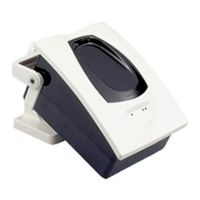
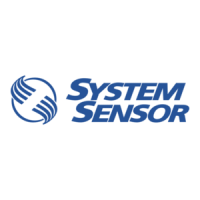

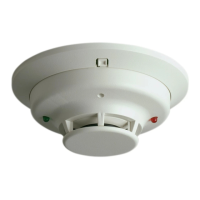
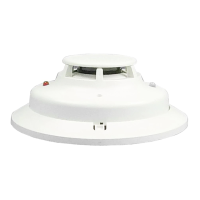

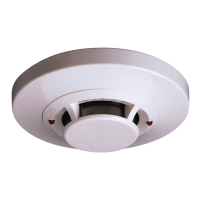
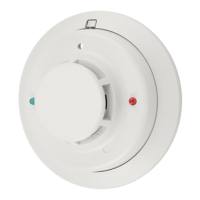

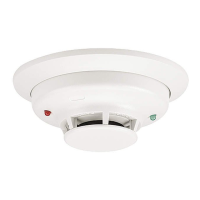
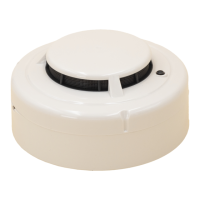
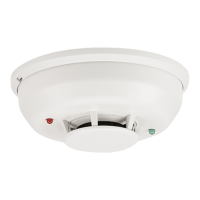
